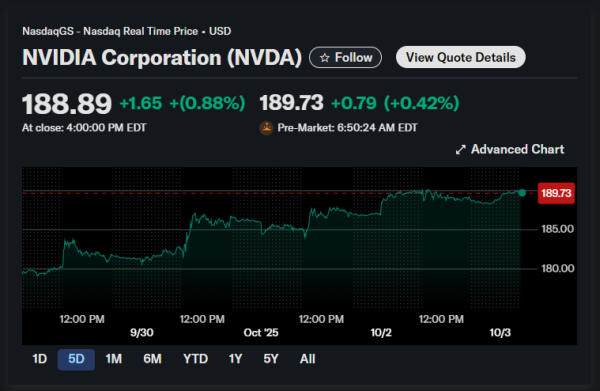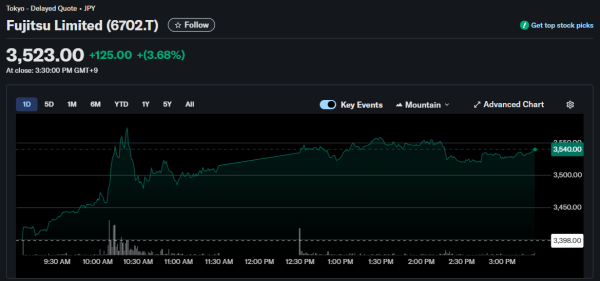A Tokyo partnership signals a strategic pivot as chip makers eye robotics infrastructure and aging demographics
The semiconductor industry rarely makes headlines for handshakes, but when Nvidia’s Jensen Huang physically embraced Fujitsu’s Takahito Tokita on a Tokyo stage Friday, the gesture carried weight. Nvidia and Fujitsu formalized plans to build what they’re calling an “AI infrastructure” specifically calibrated for Japan’s market needs, with implications stretching far beyond ceremonial announcements. Prime Wealth lead financial expert examines what this alliance reveals about shifting infrastructure priorities and where capital might flow next.
The Deal Behind the Headlines
The partnership centers on deploying AI solutions across healthcare, manufacturing, environmental monitoring, and customer service platforms by 2030. Neither executive attached hard numbers to their commitment, which actually speaks volumes about the deal structure. This appears to be a technology collaboration rather than a traditional joint venture with defined capital allocation.
Fujitsu’s stock climbed 3% on Friday, a modest but telling response. Investors seem cautiously optimistic rather than euphoric, which tracks with the announcement’s lack of concrete deliverables.
The collaboration will leverage Nvidia’s GPUs (graphics processing units) paired with Fujitsu’s decades-long Japanese market experience. What makes this different from standard tech partnerships? The explicit geographic focus is before any global expansion plans.
Most AI infrastructure plays a target worldwide market from day one. These companies are deliberately starting with Japanese market conditions. That specificity matters more than it might seem at first glance.
Demographics Drive Technology
Japan’s aging population doesn’t just create healthcare challenges. It fundamentally reshapes labor economics across every sector. The country faces persistent workforce shortages in manufacturing and service industries that won’t be resolved through traditional hiring.
Robotics investments in Japan carry different risk profiles than similar bets elsewhere. The demand drivers aren’t speculative technology trends.
They’re demographic certainties already visible in census data and population projections. The partnership mentions potential collaboration with Yaskawa Electric, a machinery and robotics manufacturer, which connects theory to factory floor reality.
Digital twins (virtual replicas of physical systems) combined with AI-powered robotics can theoretically offset human labor gaps. Whether that scales economically remains the billion-dollar question. Manufacturing automation has existed for decades, so what changes now? The learning component makes all the difference.
Traditional industrial robots follow programmed routines without deviation. AI-enabled systems adapt to variations, predict maintenance needs, and optimize workflows in real time without human intervention. That capability shift could justify premium valuations for companies positioned correctly in this transition.
GPU Dominance and Strategic Vulnerabilities
Nvidia’s graphics processing units power most current AI development globally. That market position creates both opportunity and significant risk factors. The company essentially operates as an infrastructure provider for an entire technological shift, similar to how Cisco dominated internet backbone equipment in the late 1990s.
History suggests such dominance invites competition and regulatory scrutiny worth monitoring closely. Japan’s commitment to building domestic AI infrastructure using Nvidia chips reinforces its current market position but also highlights dependency risk. If alternative GPU architectures emerge or geopolitical tensions disrupt chip supply chains, these partnerships face immediate stress.
The executives emphasized “humancentric” approaches and keeping Japan competitive. That language hints at concerns beyond pure technological capability. Countries increasingly view AI infrastructure as a strategic national asset after recent semiconductor supply chain disruptions taught painful lessons.
What the Market Isn’t Pricing
Most AI investment narratives focus on software applications or consumer-facing products like chatbots. Fewer analysts examine infrastructure layer economics carefully. Building the systems that enable AI applications requires enormous capital expenditure with uncertain payback timelines that don’t fit neatly into quarterly projections.
Investors should watch capital intensity ratios for companies in this space more closely than revenue growth metrics. Fujitsu brings decades of Japan market experience, but hasn’t dominated recent technology cycles.
Nvidia brings cutting-edge GPU technology but limited experience with Japanese regulatory environments and business culture nuances. The partnership attempts to bridge those gaps through complementary strengths.
Whether that synergy works depends on execution factors that can’t be modeled in spreadsheets. The 2030 timeline spans six years, an eternity in technology markets but relatively short for infrastructure buildouts. It suggests either aggressive deployment schedules or perhaps a modest scope that both sides aren’t fully detailing yet.
Reading Between the Lines
This announcement won’t move semiconductor markets significantly by itself. It represents one data point in a larger pattern of countries racing to establish AI infrastructure footholds before competitors lock in advantages. Japan’s focus on robotics applications makes strategic sense given demographic pressures already impacting economic output.
For investors, the question becomes whether Fujitsu can successfully integrate Nvidia’s technology into commercially viable products before competitors do. The 3% stock bump suggests markets see potential but aren’t making large bets yet. That might be appropriate caution given execution risks.
Three indicators deserve attention going forward: actual project announcements with specific customers, capital expenditure guidance from both companies, and competitor responses in the coming quarters. Technology partnerships generate headlines easily through press conferences and executive appearances. Translating them into revenue streams takes years and often fails quietly without public acknowledgment.
The partnership’s success or failure will likely become clear well before the 2030 target date through smaller milestones and customer announcements.










